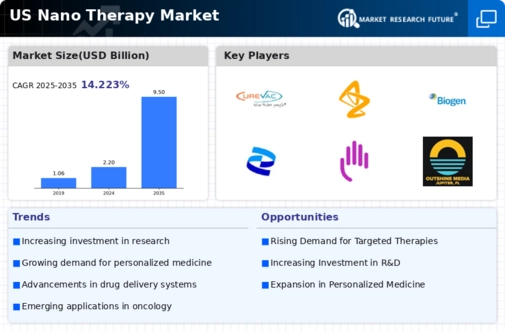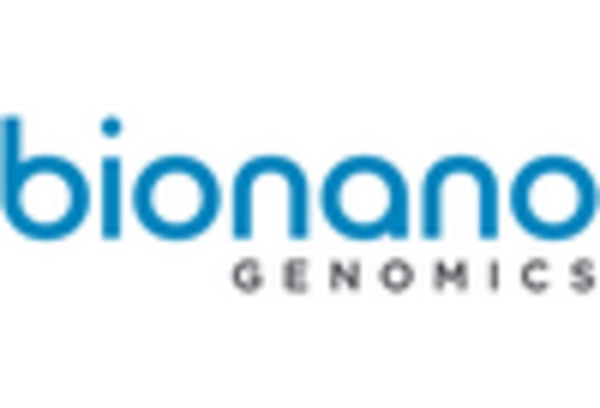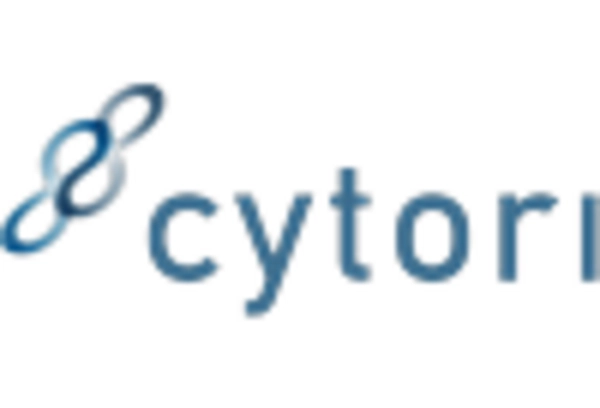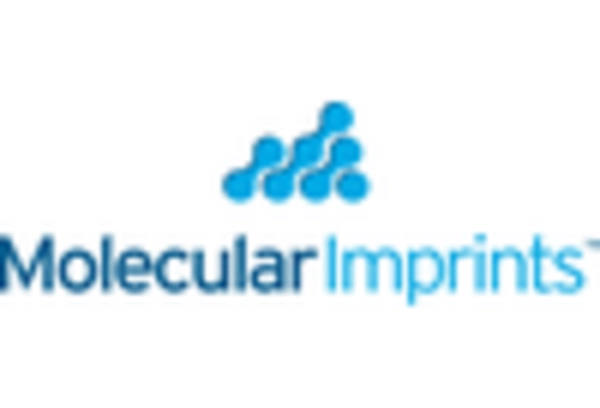Growing Awareness of Nanomedicine
The growing awareness of nanomedicine among healthcare professionals and patients is a pivotal driver for the nano therapy market. Educational initiatives and outreach programs are enhancing understanding of the benefits and applications of nano therapies. As patients become more informed about their treatment options, there is a noticeable shift towards therapies that utilize nanotechnology for improved outcomes. This trend is reflected in the increasing number of clinical trials and publications focusing on nano therapies, which have surged by over 30% in recent years. Furthermore, healthcare providers are increasingly recognizing the potential of nano therapies to address unmet medical needs, particularly in oncology and chronic disease management. Thus, the growing awareness of nanomedicine is a significant driver for the nano therapy market, as it encourages adoption and integration into standard treatment protocols.
Rising Demand for Targeted Therapies
The increasing prevalence of chronic diseases in the US is driving the demand for targeted therapies, which is a key driver for the nano therapy market. As healthcare providers seek more effective treatment options, nano therapies offer the potential for precision medicine that minimizes side effects while maximizing therapeutic efficacy. According to recent estimates, the market for targeted therapies is projected to reach approximately $200 billion by 2026, indicating a robust growth trajectory. This trend suggests that the nano therapy market will likely benefit from the shift towards personalized medicine, as these therapies can be tailored to individual patient needs. Furthermore, the ability of nano therapies to deliver drugs directly to affected cells enhances their appeal, potentially leading to increased adoption in clinical settings. Thus, the rising demand for targeted therapies is a significant driver for the nano therapy market.
Regulatory Support for Nanotechnology
Regulatory support for nanotechnology is emerging as a crucial driver for the nano therapy market. The US Food and Drug Administration (FDA) has established guidelines that facilitate the approval process for nano-based therapies, thereby encouraging innovation in this field. The streamlined regulatory pathways are designed to ensure safety and efficacy while promoting the development of novel therapies. As of 2025, the FDA has approved several nano therapies, which has instilled confidence in both investors and developers. This regulatory environment not only accelerates the introduction of new products to the market but also enhances the credibility of nano therapies among healthcare providers. Consequently, regulatory support for nanotechnology is a vital driver for the nano therapy market, fostering a landscape that encourages research, development, and commercialization.
Increased Investment in Healthcare R&D
The surge in investment in healthcare research and development is significantly impacting the nano therapy market. With the US government and private sector allocating substantial funds towards innovative healthcare solutions, the nano therapy market is poised for growth. In 2025, healthcare R&D spending in the US is projected to exceed $200 billion, with a notable portion directed towards nanotechnology applications. This influx of capital facilitates the exploration of novel nano therapeutic agents and enhances clinical trials, thereby accelerating the path to market for new therapies. Moreover, the focus on improving patient outcomes and reducing healthcare costs aligns with the capabilities of nano therapies, which can provide targeted treatment options. Consequently, increased investment in healthcare R&D serves as a vital driver for the nano therapy market, fostering an environment conducive to innovation and advancement.
Technological Innovations in Nanotechnology
Technological advancements in nanotechnology are propelling the nano therapy market forward. Innovations in nanomaterials and drug formulation techniques are enhancing the efficacy and safety profiles of nano therapies. For instance, the development of nanoparticles that can cross biological barriers, such as the blood-brain barrier, opens new avenues for treating neurological disorders. The US nanotechnology market is expected to grow at a CAGR of around 15% through 2027, reflecting the increasing investment in research and development. These innovations not only improve the therapeutic outcomes but also reduce the overall treatment costs, making nano therapies more accessible. As a result, the continuous evolution of technology in nanotechnology is a crucial driver for the nano therapy market, fostering a competitive landscape that encourages further research and application.

















Leave a Comment